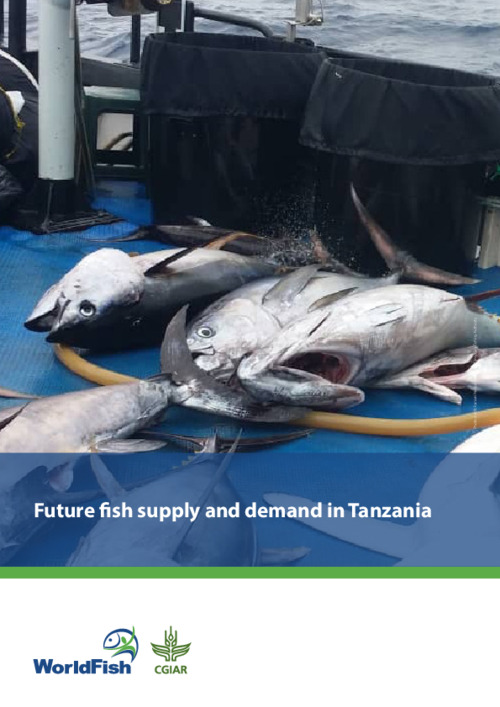Future fish supply and demand in Tanzania

Aquatic food production in Tanzania has substantial room to grow as multiple indicators of fishery
performance are lower than expected. Tanzania’s population growth is outpacing the rate of growth
in the aquatic food supply, leading to an annual per capita fish consumption rate of roughly 8.5 kg. For
comparison, the rate among the Least Developed Countries is 12.6 kg (FAO 2020). This is not caused by the
preferences of consumers in Tanzania, as the demand gap for fish has been estimated at roughly 300,000 t
(MOLF 2020), a substantial amount. Furthermore, the demand for aquatic foods worldwide is projected to
double by 2050, with higher increases in areas where such foods will become more accessible. To meet the
supply shortage, imports of low-value fish in Tanzania have risen steadily in recent years, closing the gap
between import and export quantities. The fisheries sector in the country directly provides jobs for about
200,000 people, while 4.5 million people (approximately 35% of rural employment) indirectly depend on
fishery activities. The sector makes up about 1.75% of Tanzania’s gross domestic product (GDP). Moreover,
aquaculture production remains disappointingly low at just 4% of total national fish production.
Permalink
Date Available
Type
Publisher
Countries
Copyright
CC-BY-NC-4.0
Language